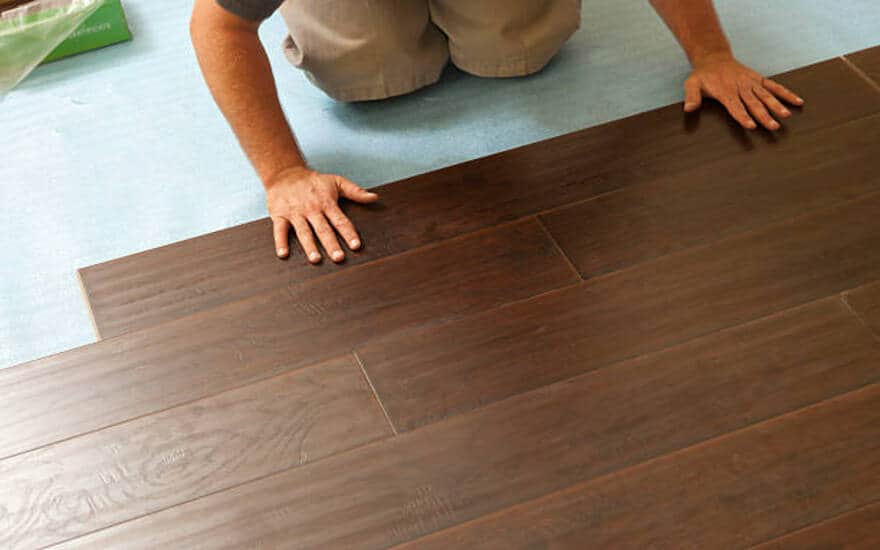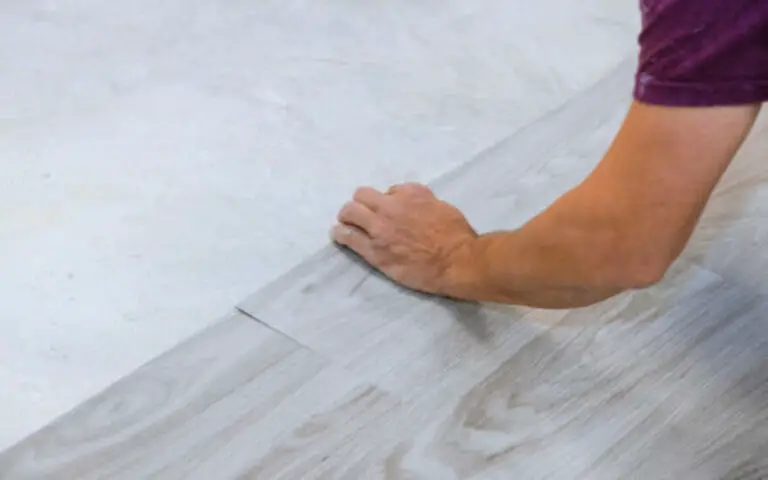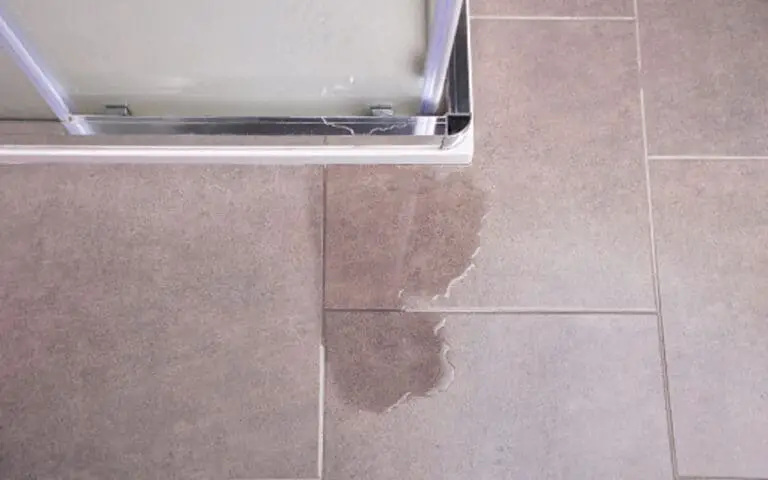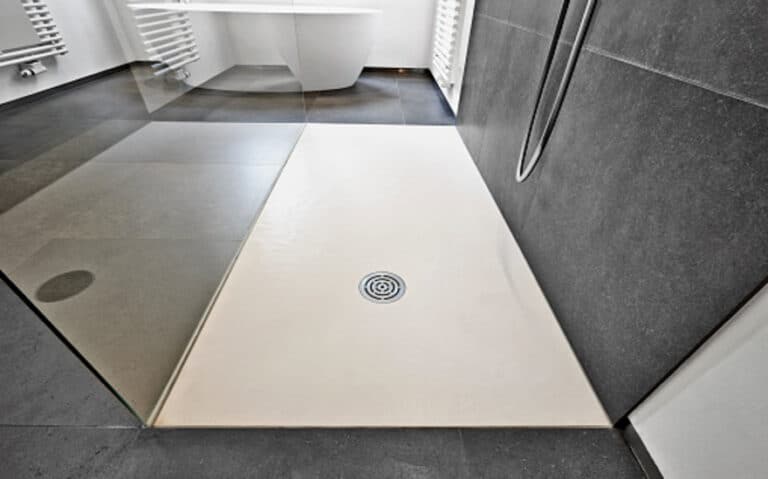Yes, You can put laminate flooring over the tile.
Then you may have asked yourself if it’s okay to put laminate flooring over tile. This blog post will explore why it’s a great idea and how you can achieve the perfect result.
Is it okay to put laminate flooring over the tile?
Installing laminate flooring over tile is a great way to upgrade your home without the hassle of removing your existing flooring. However, starting with your project, it’s important to ensure that your tile is in good condition, or else you could be compromising the integrity of the flooring.
It’s also important to determine if you need additional materials like underlayment and transition strips. With the right preparation and materials, you can ensure your laminate flooring over tile will look great and last for years.

Can laminate floors be replaced with tile in 5 steps?
When installing laminate flooring over tile, it is possible to do so in five steps. The first step is to prepare the subfloor, which includes vacuuming any dust and debris and wiping down the surface with a tack cloth. After that, you will need to install an underlayment for added cushioning and moisture protection.
Then, you can lay the laminate tiles and trim them to fit the area. Finally, you can install transition strips to cover gaps or unfinished edges. It’s important to note that these steps may vary slightly depending on the type of tile you are working with and how to level the surface.
Step 1: Prepare the Subfloor
Installing laminate flooring over tile requires some subfloor preparation and taking certain safety precautions. To begin, you’ll need to ensure that the tile floor is in decent shape, without being loose or having cracks.
If they are, it’s inadvisable to lay the laminate flooring over them. Afterward, check for any uneven spots and use a self-leveling compound if necessary. This will give you a smooth surface for your floating laminate floors. With the subfloor properly prepared, you can continue with the next steps of installing your laminate flooring over the tile.
Step 2: Install Underlayment
Once the subfloor is ready, installing an underlayment is next. Underlayment is a thin layer of foam that provides cushioning and insulation, and it helps to provide a smooth surface for the laminate flooring to lay on.
It also helps to reduce sound transmission between floors. It would be best to use an underlayment specifically designed for laminate flooring when installing laminate flooring over tile. This will ensure that the laminate tiles stay in place and do not crack or chip. Be sure to follow the manufacturer’s instructions when installing the underlayment.
Step 3: Lay the Laminate Tiles
Once the underlayment has been installed, it’s time to lay the laminate tiles. When laying the laminate tiles, you want to ensure they are properly aligned and even. Start by laying the first row along one wall, ensuring that the boards’ ends are straight.
You may need to trim the boards if they are shorter. Once the first row is in place, you can begin laying the rest of the laminate tiles in a staggered pattern. Ensure that each row is securely locked and all joints are tight. You should also check for any high or low spots and use a rubber mallet to clear any areas that need to be leveled.
Step 4: Trim the Laminate Tiles
Once you’ve laid your laminate tiles, the next step is to trim them. This is a critical step that needs to be done properly and with precision. To trim the tiles, use a circular saw or jigsaw with a fine-tooth blade.
Make sure to measure the room carefully and make your cuts accordingly. You may need to use a handsaw for tight spaces and tricky corners. You may go on to the following phase after all the tiles have been cut to size.
Step 5: Install Transition Strips
Once the laminate tiles have been cut and laid, it’s time to install the transition strips. These strips come in various forms and sizes and are used to transition between different kinds of flooring. They should be installed over the seam between the two types of flooring, with the strip sitting slightly above the flooring so that it can be easily seen.
It’s important to make sure the transition strip is securely attached to both floors, as this will help prevent any future movement or buckling of the laminate tiles. Once installed, you’ll have a seamless transition between your laminate and tile flooring.
Can You Install Laminate Over Tile?
Yes, you can install laminate flooring over tile. Laminate is a floating floor, so you don’t have to glue or nail it. However, ensuring the existing tile flooring is in good condition is important. You should not install laminate flooring over damaged or uneven tiles.
When installing the laminate over tiles, it is important to ensure no plank separation due to uneven tiles. If you are still determining the condition of your existing tile flooring, it is best to consult a professional before beginning the installation process.
What Do I Need to Put Down Laminate Flooring Over Tile?
When installing laminate flooring over tile, the most important thing you need is the right underlayment. Underlayment helps to keep the laminate in place, prevent moisture from seeping into the subfloor and reduce noise.
Using an underlayment specifically designed for laminate flooring over tile, such as a rubber or cork underlayment. It’s also important to ensure the tiles are clean and free of debris before laying down the underlayment.
Can I Put Laminate Flooring Over an Uneven Tile Floor?
No, you should never install laminate over uneven tile floors, and doing so can compromise the integrity of the flooring. Uneven tile floors won’t work as well as the foundation for laminate. You’ll be able to feel the bumps and dips through the laminate.
Alternatively, consider installing a layer of underlayment between the tiles and the laminate. This will help to create a more even surface and provide cushioning, noise reduction and moisture protection.
What Is the Best Underlayment to Put Down for Laminate Over Tile?
When choosing the best underlayment for laminate flooring over tile, there are a few factors to consider. The first is the type of tile you’re working with. If installing laminate over ceramic tile, you should use an underlayment like a foam or cork pad to provide cushioning and moisture protection.
On the other hand, if you’re installing laminate over vinyl tile or linoleum, you may not need an underlayment. The second factor to consider is the condition of the existing tile floor. Underlayment isn’t required if the tiles are in excellent condition and there is no moisture accumulation or unevenness.
Finally, if the existing tiles are in poor condition or there is a risk of moisture buildup, it’s best to use an underlayment for added protection.
Are There Any Special Considerations When Installing Laminate Flooring Over Tile?
When considering installing laminate flooring over tile, it’s important to keep in mind that there are some special considerations you should be aware of. First and foremost, you’ll need to make sure that the tile floor is even and smooth, as any bumps or dips could cause the laminate planks to come apart.
You should also ensure that you have the right underlayment for the job. This will provide additional cushioning for the laminate planks and help them stay in place. Finally, it’s important to install transition strips to provide a smooth transition between the laminate and the tile. With all these considerations, you can ensure that your laminate flooring over tile will look great and last for years.
Are There Any Disadvantages of Installing Laminate Flooring Over Tile?
It is possible to install laminate flooring over tile; however, there are some disadvantages. Laminate flooring is less durable than tile, so while it may look nice, it may only last for a while.
Additionally, if the tile floor is uneven or has cracks, the laminate will not lay flat, resulting in an uneven surface. Finally, it may be difficult to replace the laminate flooring if it becomes damaged or needs to be replaced.
What Are the Steps Involved in Installing Laminate Flooring Over Tile?
Now that you know that it is possible to put laminate flooring over tile, you may be wondering what the steps involved in the installation process are. The first step is to prepare the subfloor by ensuring it is clean, dry, and level. This can be done by filling in cracks and ensuring the tile surface is even.
Next, you will need to install underlayment, which provides cushioning to the laminate planks. After that, you can begin to lay down your laminate tiles. Once all the tiles have been installed, you can trim the edges, install transition strips, and finish up with any additional details like quarter-round molding.
It’s important to note that you should take special consideration when installing laminate flooring over tile, such as using moisture-resistant underlayment and ensuring proper ventilation.
Final Verdict
In conclusion, you can put laminate flooring over tile but consider the tile’s condition and ensure that the subfloor is properly prepared for the installation. Additionally, you will need to purchase underlayment, trim the laminate tiles, and install transition strips. Make sure to follow all instructions carefully and if you feel like you need help, hire a professional installer to do the job for you.






